

Age: 42
Sex: female
Date: 10 May 1934
Place: Park Crescent, Brighton
Violette Kaye was found dead in a trunk.
The case was known as the Brighton Trunk Case No.2.
A man was tried but acquitted but later confessed to a Newspaper in 1976 although no action was taken.
Her body was found in a trunk in his room. However, he said that he had found her dead and that because he had a criminal record he didn't think the police would believe him and so hid her body. The court heard that other than finding the body of Violette Kaye in the man's room, there was no other evidence to indicate that he had murdered her.
Violette Kaye's body was found whilst the police were investigating a different murder case involving the torso of an unknown woman which was found in a trunk at Brighton railway station on 17 June 1934. The legs of the woman were later found in a suitcase at King's Cross railway station.
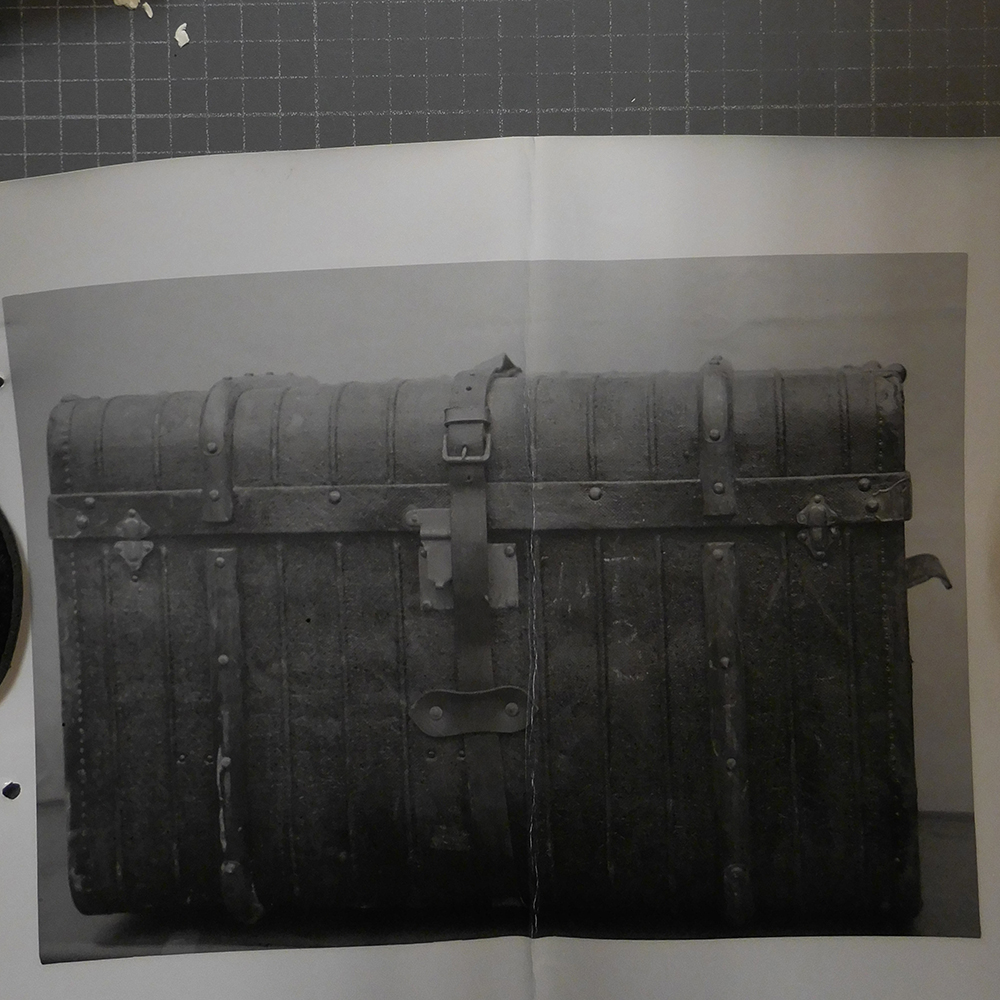
After the first set of remains were found at Brighton Railway Station, a case which the police called Brighton Trunk Case No.1, on 17 June 1934 the police said that they put out a request for anyone that could identify the woman. It was also noted that a newspaper also offered a reward for anyone that had any information that would lead to the killer. The result was an influx of communications to the police, one of which included a report that Violette Kaye was missing. However, during the investigation by the police into Brighton Trunk Case No.1, they said that the information regarding Violette Kaye's disappearance did not appear to be of any value as the material dates between her disappearance and those of the Brighton Trunk Case No.1 differed and her description in no way agreed with that supplied by the pathologist as being a woman between 21-25 years of age and 5ft 3in.
However, the police said that attention was otherwise given to the matter of Violette Kaye's disappearance and her mother was spoken to in New Kent Road in London where she lived. The mother said that Violette Kaye was 42 years of age and had previously given birth to a child and had scars on her left breast. She said that she had not seen her daughter in three years. The police noted that at the time Violette Kaye was a well known local prostitute in Brighton and found that she had been cohabiting with the man later tried for her murder, and he was then interviewed about her disappearance on 14 July 1934.
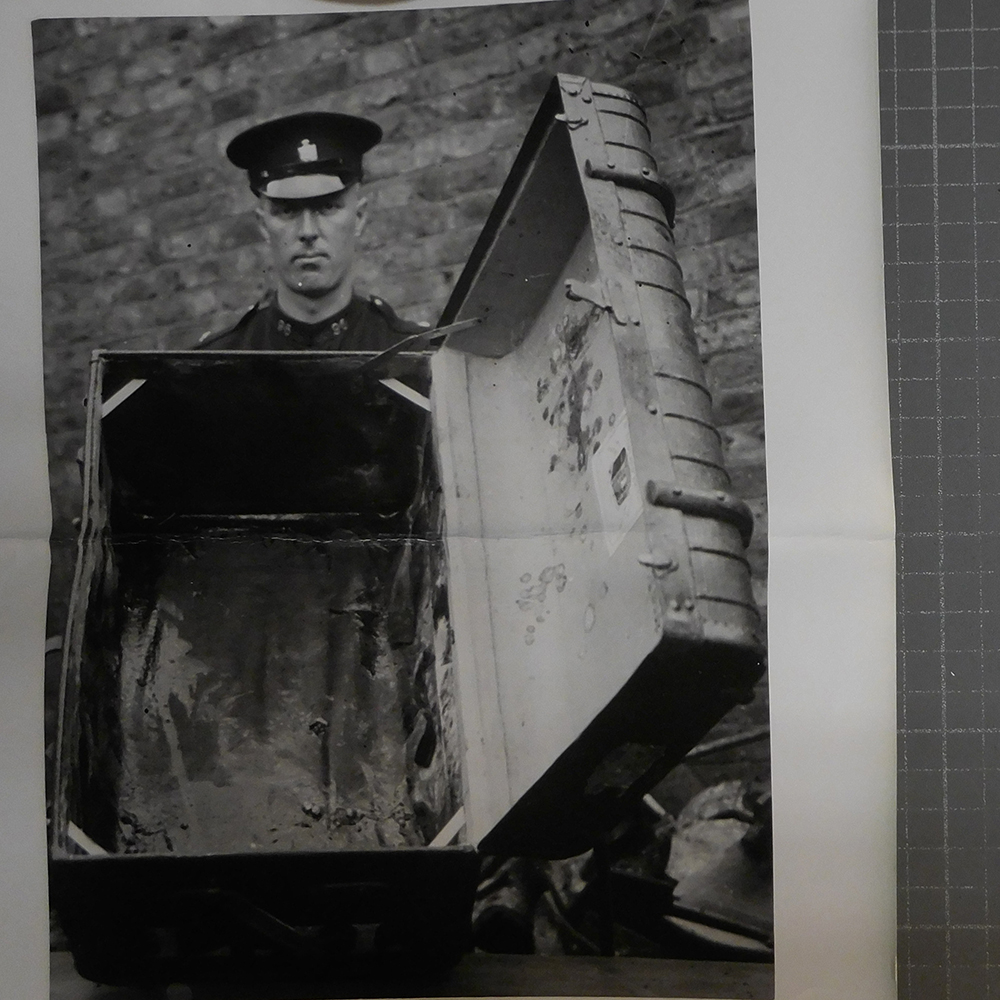
The police said that when they interviewed him he gave a different name and said that he was living in a lodging house but could not give the address as he was not well acquainted with the district, although later said that it was the Model Lodging House which the police later determined was at 73 Eastern Road in Brighton. The police then said that the man went on to state that he was 26 years old, single, and a waiter. He then went on to say how he had met Violette Kaye in London and said that she had asked him to accompany her to Brighton and that when they arrived they had lived at various addresses as man and wife, and that she had apparently supplied him with means. The police report states that he initially falsely declared that he had no knowledge as to how she became possessed of the wherewithal to enable them to live.
The man said that he eventually found employment at the Skylark Cafe at 166 Kings Road Arches in Brighton as a handyman about two weeks before Whitsun in 1934. He said that at the time he and Violette Kaye were occupying three rooms in a basement at 44 Park Crescent in Brighton for which they were paying 16s a week.
The man then said that after he had been employed at the Skylark Cafe for a week, probably about 14 May 1934, he got home to find that Violette Kaye had left him a note stating that she had left him to go with a man who was able to keep her. He added that he thought that she had gone off with a man who had a bookmaker’s office in Gloucester Road in Brighton.
The police report stated that suspicion had also been directed at the man after a waitress at the Skylark Cafe said that the man had given her clothing that had belonged to Violette Kaye. The waitress also said that she had been to the man's lodgings later at 52 Kemp Street when she had found that the man was extremely agitated and had suggested that she should stay with him.
However, during the initial police interview with the man, they said that the man denied that he had given the waitress any of Violette Kaye's clothing.
The police said that after it became abundantly clear that the man could not have been responsible for depositing the suitcases at Kings Cross and Brighton Railway Stations, and that it was known that the descriptions of Violette Kaye and the remains of the woman in Brighton Trunk Case No.1 did not match, he was released. The police noted that the man had told his story with perfect composure, however, they still ordered that he be followed.
The police said that when they followed the man they found that he went back to his place of work and carried out his usual duties and stated that he then went off to Sherry’s Dance Hall where he danced for the whole evening. The police stated that whilst they were convinced that he was not involved in Brighton Trunk Case No.1, they directed that the police should go to 52 Kemp Street on the Sunday morning, 15 July 1934. However, before they did so, the landlord of 52 Kemp Street came to see them and after they went back to the address they found the trunk containing Violette Kaye's body and the man missing.
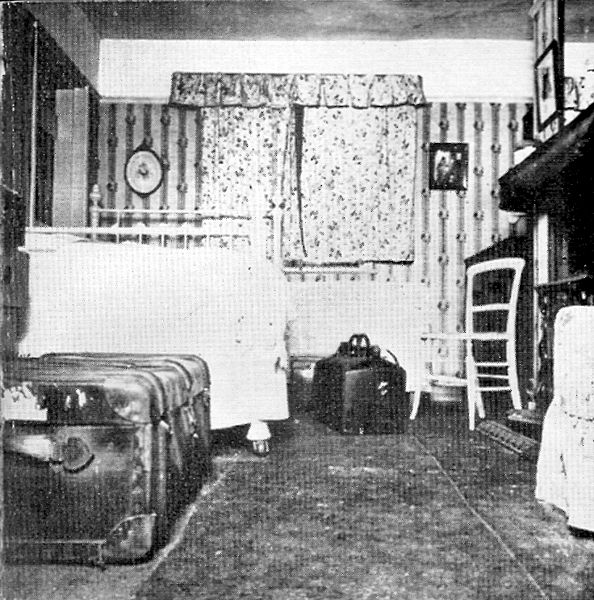
The occupier/landlord of 52 Kemp Street said that the man had arrived on 14 May 1934, with another man who had helped him to carry his trunk in, which was then deposited in the room that the man was going to take up as his lodgings. The landlord said that since moving in to the basement, the man had stayed there almost every night. He added that during the man's stay, his wife's attention had been drawn to a quantity of fluid that appeared to come from the trunk and had noticed an unpleasant odour. He said that his wife had then spoken to the man who had then cleaned the floor and said that the smell after that was less noticeable.
The landlord of 52 Kemp Street said that at 6.30am on 15 July 1934, he discovered that the man had left his house and then went to the Skylark Cafe where he said he found that the police had interviewed the man and said that he then went to the police station after which he went back to his house with some police officers, shortly after which Violette Kaye's body was found in the trunk.
When the occupiers/landlords of 52 Kemp Street were questioned, they said that they had been to the Skylark Cafe on 6 May 1934 where they had been waited on by the man. They said that during the course of their meal, they informed the man that it would be to his advantage if he referred persons seeking apartments to their house at 52 Kemp Street. They said that when they went back to the Skylark Cafe on 13 May 1934 they were again waited on by the man and that he then intimated that he was desirous of taking over a room and it was then arranged that his luggage would be brought to their house the following day, 14 May 1934. The occupier of 52 Kemp Street said that the man then moved in on 14 May 1934 at 8am and said that he remained there until 15 July 1934. The occupiers said that they recalled one night, a Thursday or Friday when the man had not been in his room but said that they were definite that he was not away on 6 or 7 June 1934.
The occupiers/landlords said that at about the end of May 1934 permission was given to the man to bring his finacee, who was thought to have been the waitress from the Skylark Cafe, back to his room and tea was provided.
The landlady said that after she had complained about the fluid that was exuding from the trunk, the man had cleaned it up, but added that about a week before the man left she had said to him, 'Your box does smell', but said that he apparently made no reply, but said that she saw that a piece of sack or cloth had been placed under the trunk the following morning. The landlady said that the man also asked her for a key to his room so that he could lock it so that no one could enter and added that he had also brought other men to the house that had stayed without her permission.
After Violette Kaye's body was found the police began to search for the man. During their investigations they found two men that were able to say what the man had done after leaving Sherry’s Dance Hall.
The first man said that in the early hours of 15 July 1934 (police report states 16 July 1934), at 12.45am, he had been with the man tried and another man outside the Middle Street entrance of Sherry’s Dance Hall and said that they then all then went to 52 Kemp Street. He said that when they got there he remarked on the terrible smell. He said that he saw the black trunk and said that after the man had shaved, they went off, at about 5.15am, to a cafe where the man tried enquired about the time of the first train to London and found that it left at 7am. The man said that the man tried then suggested that they should walk to Preston Park Station where they could catch the same train.
The second man corroborated the first man’s story and added that the man tried that they had been back with to 52 Kemp Street had appeared quite care free during the time that they were together.
Several other men were later found that said that they had smelt peculiar smells when they had been to 52 Kemp Street. One woman said that she had been to 52 Kemp Street on 15 June 1934 when she had smelt the odour and a man said that he had slept in the man's room at 52 Kemp Street between 12 June 1934 and 2 July 1934 and had also noticed the smell.
It was also noted that the man had sold several effects whilst living at 44 Park Crescent in the middle of May 1934 to a man, but the man said that he didn't notice anything irregular about the items and said that the man had told him that the reason that he was selling them was because his wife's mother was ill in London and that he needed to go there, adding that he had also told him that his wife had left him following a bust up.
When the police examined the black trunk they said that they traced it back to a man that stood in the open market selling his wares who said that he had sold it about two months earlier, or a little longer, for 7s 6d. He said that a man had called at his stall and requested to be supplied with a travelling trunk because he had taken a situation in France. The man was shown a photo of the trunk that Violette Kaye was found in, the original being with the pathologist, and said that the man said that he was certain that it was the one that he had sold which he said that he had delivered to 44 Park Crescent.
When the police questioned the owner of the Skylark Cafe he confirmed that the man had begun his employment with him on 5 May 1934 and that he had been with him until the day before he had gone to London on 14 July 1934.
The police said that they were also able to find the man that had helped the man tried convey the trunk from 44 Park Crescent to 52 Kemp Street, who was also employed at the Skylark Cafe. The man said that the trunk had been heavy and that they had obtained a barrow for its conveyance. He said that when he had noted to the man that it was heavy, the man had told him that it had contained a quantity of china, clothing and bedding.
When the police went to 44 Park Crescent and interviewed the landlord he said that the man and Violette Kaye had lived with him and said that the last time he saw Violette Kaye was on 7 May 1934. When questioned, the landlord also said that he had since missed a large engineers hammer from his coal seller, and although searches were made for it, it could not be found, although a hammer head was later found, apparently burnt, in the cellar.
Violette Kaye had been seen at the Skylark Cafe on 10 May 1934 at the Skylark Cafe in King's Road Arches, Brighton, between 2.30pm and 3pm where she was heard to have a conversation with the man that was tried during which the name of the waitress there was mentioned but to which the man told her not to take any notice, adding that Violette Kaye was jealous.
Shortly after, a motor car driver said that he went to 44 Park Crescent in the afternoon where he saw Violette Kaye and had a conversation with her. He said that she seemed to be in a distressed condition, very excited, nervous and shaking. He added that she was twitching in the hands and that her face presented the appearance of being under the influence of drugs. It was heard that that was on the Thursday and that was the last day on which any evidence was available as to Violette Kaye.
During the investigation the police said that they interviewed a man that had known the man tried for about three months and said that he gave them a very material statement. He said that although he had never seen Violette Kaye, he had been to the Skylark Cafe on 26 June 1934 and said that the man had said to him, 'My missus, the cow of a woman, I have given her the biggest bashing she ever had in her life. I kicked her from pillar to post. She is nothing but a dirty old prostitute and comes in what hours she likes'. The man said that he then said, 'Aren't you ashamed of hitting your wife like that?' and said that the man tried said, 'She is not my wife, she is a dirty old prostitute, I picked her up some years ago. Anyway, when I got up this morning, she had blown, I don't suppose I shall see her any more'.
After it was found that the man had gone to London, the police in Brighton contacted Scotland Yard who then began to immediately search for the man and he was found on 17 July 1934 at about 1.35am. He was found by two police constables at the junction of Eltham and Sidcup Roads looking very nervous. They said that when he saw them, he started to whistle with the obvious intention of allaying any suspicion. However, they said that they stopped him and asked him where he was going and said that he replied, 'I am on the road, going to Maidstone'. However, by that time they had identified him as the man wanted in Brighton and informed him so and then took him off to Lee Road police station. The police said that when they put him in the motor car that they were using for their patrol work, the man said, 'Yes, I am the man, but I did not murder her, I would not cut her hand off. She has been keeping me for months'.
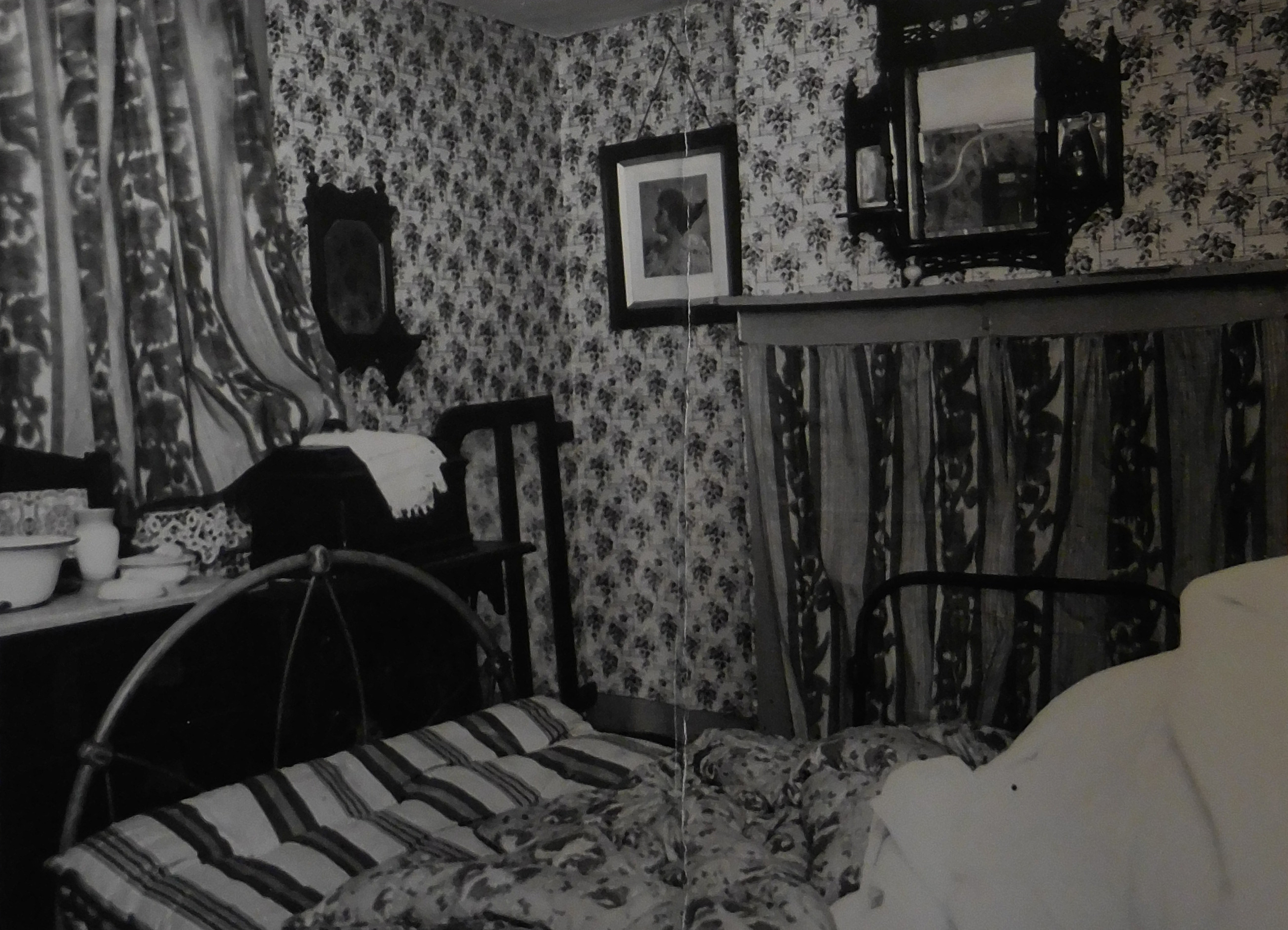
After he was arrested the police from Brighton went to see him at Lee Road police station, arriving at 5.25am on 17 July 1934 and a statement was made. His statement, which refers to information and records that he was looking at the time he made the statement, read:
I first met this young lady, Violette Kaye, who is also known as Watson as far as I know in Sadie's cafe, Leicester Square. I was a chef there. It was about the beginning of September last. The cafe shut down, she asked me if I would like to come to Brighton to find another job. I gave it a couple of days thinking over, and then I decided to say yes, so we came down to Brighton, we lived there since then until just recently. The first address we lived was 20 Devonshire Place, then we shifted to Mihell Street, off Edward Street, No.5 or 6, I forget. Then we lived at St Georges Terrace, I think it was No. 8 or 9. I think we went to 15 Grand Parade. From there we went to York Place, then we went to a little street up Elm Grove, up half way, if I heard it, I would recollect it, and from there I went to 44 Park Crescent. We must have lived there for about six weeks before I started work. I had been out of work before that. I started work a fortnight before the Whitsun holidays at the Skylark. I was a handy man there, practically everything, I was in the kitchen, outside, and looked after the customers. I had been working there a week. I started on the Sunday. On the Saturday, I drew my first week's wages. On my way home, I bought a hat and pair of gloves in the London Road. I went downstairs to the flat you see, I always used to ring the bell, and I couldn't get an answer. I got in through the front room window and she wasn't in the front room or the kitchen. I went into the bedroom and she was laying on the bed with a handkerchief tied around her neck, and there was blood all over the sheets and everywhere. Well I got frightened, I knew they would blame me, and I couldn't prove I hadn't done it, so I just went out and tried to think things over, what to do. I don't know why, but I hadn't got the courage to go and tell the police what I had found, so I decided to take it with me. So for that purpose I bought a trunk on the following Tuesday. You see, she was a prostitute, you see, that was the unfortunate part about it. There was always men coming to the house, all the night. That you have only to ask my landlord, he will tell you. I don't know who killed her as God is my judge, I don't know. There is one man who she used to live with for five years. He is in the Fascists, up at Chelsea. He was the only lover she had besides me, and he wanted her to go back to him, and he was upset because she wouldn't, and that is all I know about it. There is nothing more I can say, that's the truth, but this isn't, that's where they always hit a man when he is out. That is libel, I have never hit a man. It's got here that I was a notorious man for a number of years. That is quite untrue, I have never been a notorious character. It says here, quite recently I was involved in a scene in a cafe when a woman was stabbed with a knife. That is quite untrue which you can prove. It's absurd, I am quite innocent, except for the fact that I kept the body, I should have told the police when I found her. That’s all.
Violette Kaye's post-mortem showed that she died from shock after receiving a fractured skull after having been hit about the head with a blunt object.
The police report stated that the man tried had led a depraved life and stated that their enquiries showed that he had had immoral relations with innumerable women. The report stated that one of the women that they interviewed said that she had gone to 52 Kemp Street with the man where they had had connections, which would have been when Violette Kaye was in the trunk, and later detailed how the man had boasted about his immoral practices.
Another 17-year old girl said that on 15 July 1934 at about 12.15am, in Lea Green, in London, after the man had made good his escape, she had met him with another man. She said that the man tried, who she had just met, asked her if she wanted to live with him and she said that she refused. However, she added that they then went on an omnibus to some open spaces where intercourse took place. She said that whilst they were there the man had asked her if she could keep a secret and when she said yes, he said, 'It is about a murder, you have heard about the trunk crime?'. The girl said that she hadn't and said that the man then asked her if she loved him and when she said that she did, he said, 'If they were to find out about me being a murderer, of course you know I am, would you dictate what I am going to tell you at the Court at my trial'. The girl said that she replied, 'Let me hear what it is', and said that the men then said, 'You have known me since March, you met me on the beach at Brighton one evening when I made arrangements for you to meet me at my flat'. The girl said that she remembered the word Crescent used in relation to the address, and said that he continued, 'on the following afternoon. When you got there, you found me and a woman alone in the flat. I told you three men want to see the woman and we will go out for a walk while they are in the flat. We went out for a walk, leaving the woman alone for the three men to come in and see her. When we got back about half an hour later, we find the woman dead in the flat and the men gone'. The girl said that the man then said that she was to say that he then felt ill and took her up the road and then left her and went back to the flat. The girl said that she agreed with the man, noting that she thought that he was joking.
The girl said that they then got on a bus and the man tried then said to her, 'They have found a black trunk and they are looking for an owner for it. The trunk contains the body of a girl. I am the owner of that trunk. Of course, I killed her, but I wasn't the only one in the house. There was a mob of us together. We put the body in the trunk and carried it out of the flat'. She said that he then further added, 'Another fellow and me killed another girl who had a mark on her face that someone could identify, so we dumped the head'. The girl said that she asked the man where he had put it but said that he didn't answer. However, she said that he then went on to say, 'We also put that body in a trunk', and said that he made some reference to the arms. She said that he then went on to say, 'If they catch me, I shall do my best to get out of it, and if you tell this story I have dictated to you, that will save me'. She also said that the man told her that if she mentioned a word to anyone of what he had told her that he could kick her to death.
The police said that they also spoke to the other man that had been with them on that night who admitted that it was he that had introduced the girl to the man.
Violette Kaye had been one of 16 children and had wanted to go onto the stage since she was a child. She won a talent competition soon after leaving school and starting touring as a professional dancer and later married, but her marriage didn't last long. She then went back onto the stage and worked in a music hall in an act billed, Kay and Kaye, but the act broke up about three years later and Violette Kaye began drinking more and taking drugs and then became a prostitute. She was working in Leicester Square at the time when she met the man that was tried with her murder and went with him to Brighton.
The man was tried at the Lewes Assizes in December 1934 of having murdered Violette Kaye between 10 and 15 May 1934 but acquitted.
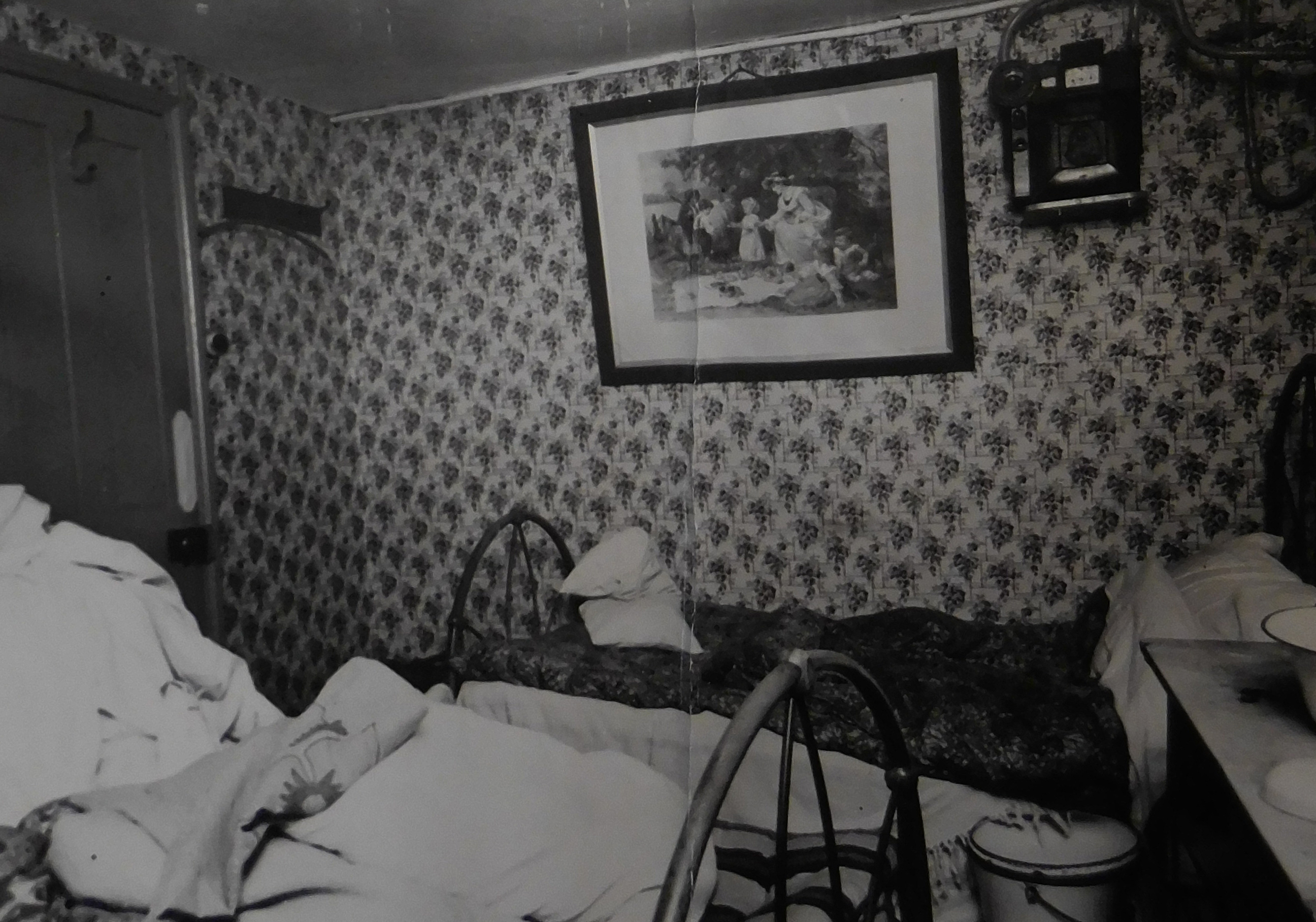
Amongst the other evidence heard, it was also stated that Violette Kaye's sister had been planning to come to Brighton on 14 May 1934 for a holiday. She lived in the Palatinate Estate in New Kent Road and was sent a telegram on 11 May at about 10am which read, 'Going abroad. Good job. Sail Sunday. Will write'. As such, her sister didn't go to Brighton. The court heard that the telegram had been handed in and written in capitals and it was stated that the man tried was also in the habit of writing on the menus in the cafe that he worked using capitals and samples of his writing were compared as evidence with the writing from the telegram which it was stated bore striking resemblances, the conclusion being that they had been written by the same hand.
It was heard then that the man tried had told the waitress when he had gone to a dance with her on 11 or 12 May 1934 that Violette Kaye had gone away to Paris. The court heard that the man then took the waitress back to his flat at 44 Park Crescent where he gave her a green costume, a hat, and a black coat which he had bought from a credit draper in Brighton on 17 April 1934 for Violette Kaye and which the landlord there said that he had seen Violette Kaye wearing. It was heard that the man said that Violette Kaye had been unable to get the clothes into her case and that he had said that he would send her things on for her but said that he was not going to bother and so gave them to the waitress.
It was also heard at the trial that the man tried had told several people at the Aladdin’s Cave cafe that he had had trouble with Violette Kaye. It was reported that he had told one man, after using some filthy expressions about her that he had given her the biggest hiding that she had had in her left and said, 'I don't suppose I shall see her anymore, because when I got up this morning she had flown'. It was also reported that he had told another man at the Aladdin’s Cave cafe that he had bashed his wife from pillar to post and that when he had woken up she had packed her trunk and gone.
It was also heard that the man tried had spoken to a dance instructor at the dance he had gone to on the Saturday night, 14 July 1934, and had told her that he was heading to Town and that when he did, Kemp Street would become famous and that in fact the whole of Brighton would become famous and that he had only four days happiness left.
The court heard that Violette Kaye had died from a fractured skull and that her post-mortem had found only minute traces of morphine in her indicating that she had taken no more than a medicinal dose. It was also noted that Violette Kaye's skull fracture could have been caused by a hammer.
It was also heard that during a search of 44 Park Crescent, the police found a hammer head amongst the rubbish in the cellar which upon inspection had the appearance of having passed through a fire.
The man's acquittal was said to have been a surprise verdict for all, including the judge and the man.
In November 1976 he went to a newspaper and admitted that he had murdered Violette Kaye. He said that after they left Bayswater for Brighton, that some of Violette Kaye's more wealthy clients would still call to see her in their Rolls-Royces and Bentleys from London, and added that she also made some new local clients. He said that when they moved into Park Crescent in March 1934 he was trying to break away from her, saying that she had become a confirmed alcoholic and that she was forever injecting herself with morphine. He said that when she had found out that he had taken a job at a seafront cafe they had a blazing row. He said that the trouble was that she wanted him to be totally dependent upon her, adding that she really loved him in her own funny way. He said that she later went down to the restaurant and caused a tremendous scene which ended in him getting the sack. He said that she was legless drunk and doped up to the eyeballs.
He said that he then called a taxi and said that they got home at about 4pm, by which time, he said that Violette Kaye was starting to suffer from withdrawal symptoms. He said that it was a lovely summer's day, but that she was shivering and asking him to make a fire for her. He said that he then went to the cellar, leaving her on the bed, to get some coal and brought some back with the coal hammer to break it into smaller pieces. He said that he broke up the coal and put the hammer down and then lit some paper and was blowing it to get the fire started when he felt a crack on the head, saying that it was Violette Kaye hitting him with the hammer. He said that he managed to get it off her and was walking back to the cellar with it when Violette Kaye shouted, 'Give me that hammer'. He said that he replied, 'I'll give you the hammer all right', and said that he threw it at her with all his strength. He said that it hit her on the left temple and that she spun around twice like something on a fairground with her eyes bulging out of her head. He said that she then fell like a ton of bricks on the brass fireplace surround. He said that he then ran over to her and shouted, 'You stupid bitch. Look what you've made me do'.
He said that as he was shouting he was holding her by her shoulders and banging her head up and down. He said that he thought that he was banging it on the floor but said that he later discovered that he was banging it on the fireplace surround and said that he then suddenly saw blood start to trickle from her mouth and said that he then froze as he realised what he had done.
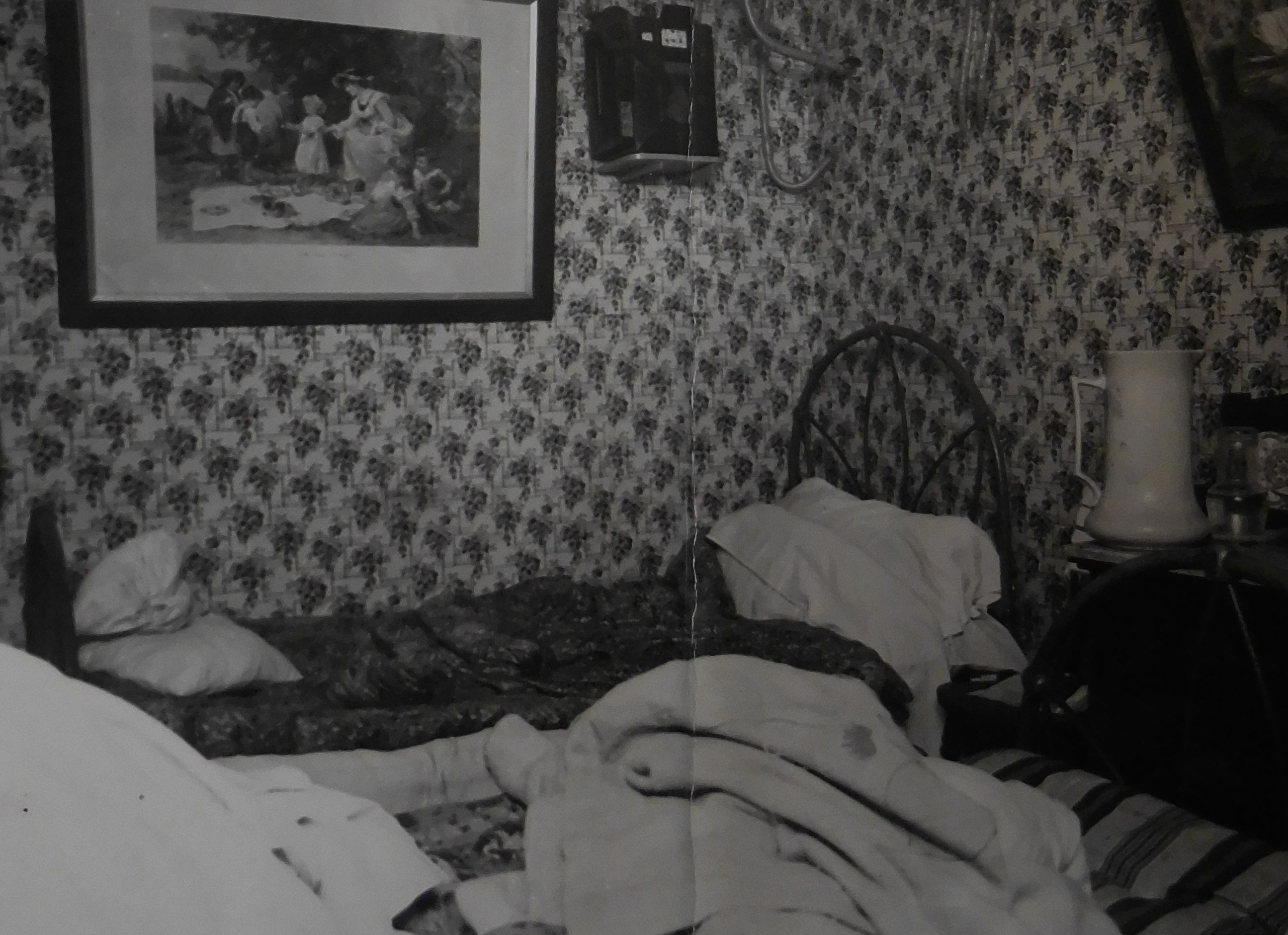
He said that he honestly didn't mean to kill her, saying that he just lost control of himself in the heat of the moment. He said that the whole thing happened in less than a minute.
He said that he then felt for a heartbeat and said that there was none and that neither did she have a pulse. He said that he then took a make-up mirror from her handbag and held it against her mouth but said that there was nothing. He said that he then thought to himself, 'This is it, You've just got yourself hanged'. He said that the rest of the story after that was the version that he gave at the trial.
He said that he put her body in the wardrobe and then bought a trunk from a Brighton market and took it back to his flat and put her in it.
He said that after the other trunk was found at Brighton Railway Station, he didn't know what to do and when the police started checking along Kemp Street he got all his money, £4, and took the first train for London but said that all his London gangland friends deserted him and he was arrested there two days later.
In his 1976 interview he said that he honestly didn't mean to kill Violette Kaye and said that these days it would have been manslaughter, but noted that back then in 1934, it was impossible to tell the truth and not get the gallows.
He said that for a year after he was acquitted he worked in a travelling fair billed as The infamous Brighton Trunk Murder Man in which he would use a guillotine to chop off the head of a pretty girl.
In his interview he concluded, 'People will still think I've been a real villain and maybe they won't forgive me. But at least I hope they will understand'.
see en.wikipedia.org
see National Archives - DPP 2/222, DPP 2/9999, MEPO 3/1692, MEPO 3/735
see Wikipedia
see Murderpedia
see The Argus
see Crime Feed
see Sword and Scale
see Notable Abodes
see Perfect Murder: A Century of Unsolved Homicides By Stephen Knight, Bernard Taylor
see The Mammoth Book of Bizarre Crimes By Robin Odell
see World Encyclopedia of 20th Century Murder By Jay Robert Nash
see Daily News (London) - Wednesday 15 August 1934
see Illustrated Police News - Thursday 26 July 1934